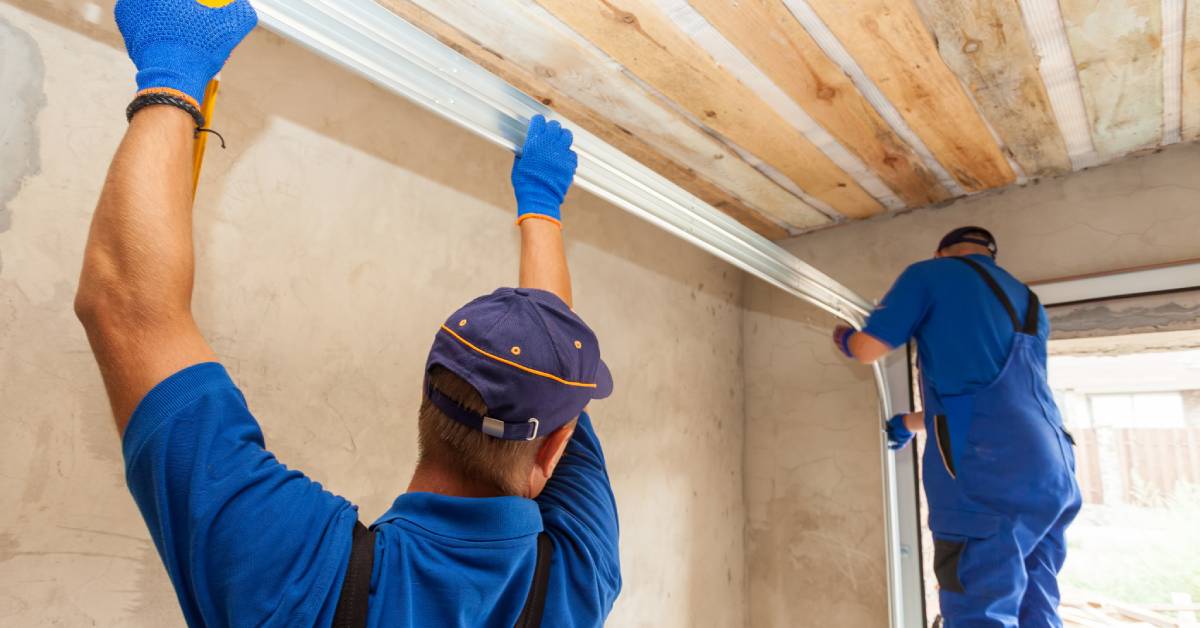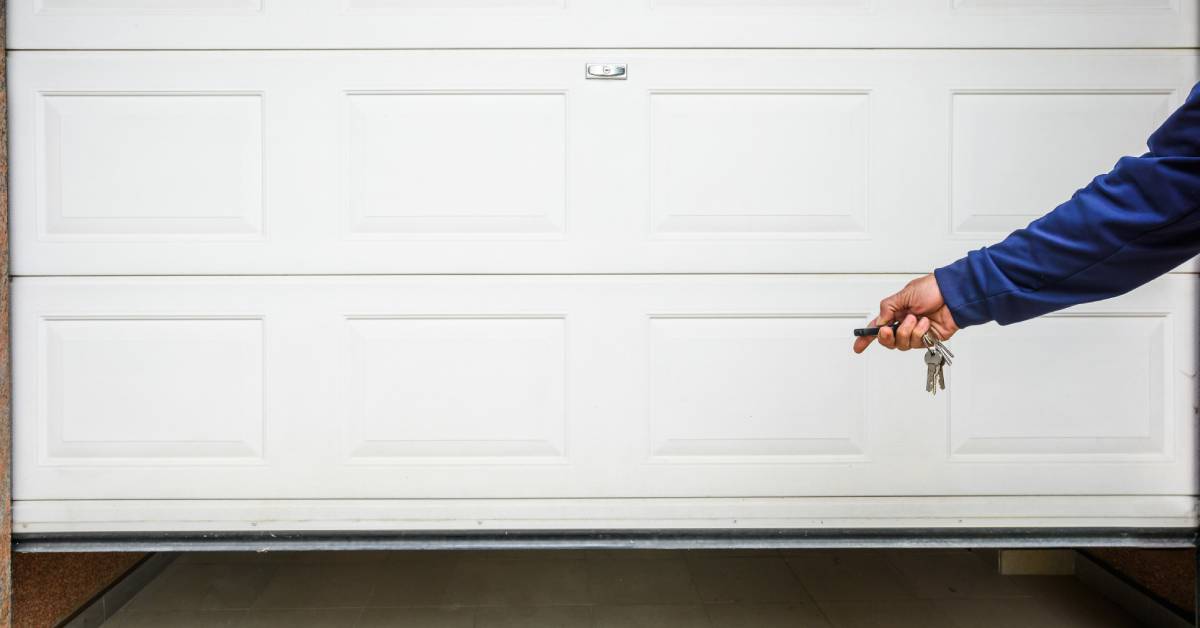A damaged garage door disrupts daily routines and limits access to the garage. Overhead garage doors that don’t open and close correctly also present considerable safety risks, potentially causing injury or leaving your home vulnerable to unauthorized entry. Professional repairs efficiently resolve garage door problems so that you can get back to your normal routine. Gain peace of mind by knowing what to expect during a professional garage door repair.
Common Issues That Require Repair
The most common causes of garage door problems include broken springs, worn-out cables, and malfunctioning openers, each of which can limit the door’s operation and safety. These issues require professional repair to prevent further damage or risk.
Here are some details about the most common issues with overhead garage doors:
- Broken springs: One of the most frequent issues, broken springs can cause the garage door to malfunction and require immediate professional attention.
- Misaligned tracks: When the tracks become misaligned, it can prevent the door from opening and closing properly, posing safety risks.
- Worn rollers: Over time, the rollers can wear out or become damaged, leading to noisy and uneven door operation.
- Faulty sensors: Malfunctioning safety sensors can prevent the door from closing and pose a safety hazard.
- Damaged panels: Dented or cracked panels not only affect the door’s appearance but can also impede its functionality.
- Broken cables: Cables play a crucial role in the lifting process, and broken cables can lead to dangerous conditions.
- Remote control issues: Problems with the remote control can hinder entry and exit.
- Motor failure: A failing garage door motor can result in a completely non-functional door.
- Weather seal damage: Damaged weather seals compromise insulation and protection against the elements, and they require replacement.
Inspecting the Overhead Door
The first step in a professional garage door repair is a thorough inspection of the overhead door. A technician will carefully examine the door’s components to identify the root cause of any issues. This includes assessing the door for visible damages, misalignments, and operational anomalies.
Following the visual inspection, the technician will conduct operational tests to better understand the door’s behavior. They will open and close the door several times, listening for unusual noises and observing any irregular movements so that no potential issue goes unnoticed.
Assessing Springs, Cables, Rollers, and Tracks
The technician will assess the condition of the springs, cables, rollers, and tracks. Springs are crucial for lifting the door, and any wear or damage can lead to operational difficulties. Cables and rollers must also be in good condition to prevent misalignment and jams.
The tracks need to be properly aligned and free of obstructions for the door to move efficiently. Any misalignment or damage to these components can cause the door to jam or move unevenly. The technician will make necessary adjustments or replacements to guarantee the door’s optimal performance.
Adjusting or Replacing Components
If the inspection reveals issues with hinges, bearings, or weather seals, the technician will adjust or replace these components. Worn-out or damaged hinges can affect the door’s alignment and movement.
Weather seals play a vital role in protecting the garage from external elements. Damaged seals can compromise the garage’s insulation, allow debris to enter and damage stored items, increase dust and dirt accumulation, and even lead to pest infestations. Additionally, debris inside the garage can create safety hazards by obstructing walkways and potentially causing accidents. If the technician notices any issues with weather seals, they will address them accordingly.
Repairing the Motor
When inspecting garage doors in Austin, Texas, technicians examine the motor units for any signs of wear, overheating, or unusual noise. They carefully check the motor’s electrical components, such as the wiring, capacitor, and circuit board, to ensure proper functioning. Additionally, the technician often tests the motor’s responsiveness to commands from the remote control or wall switch to diagnose any potential issues with the motor’s operation.
When it comes to repairing a garage door motor, the professional technician first isolates the problem by pinpointing the specific component causing the malfunction, whether it’s a faulty motor gear, worn-out bearings, or a damaged motor shaft. They proceed to disassemble the motor unit, replacing any worn or broken parts with high-quality components. After reassembly, the technician meticulously adjusts the motor’s settings, including the force and travel limits, to ensure smooth and precise operation without putting undue strain on the motor.
Lubricating Moving Parts
The technician will apply high-quality lubricant to the door’s moving parts, such as springs, rollers, and hinges. Proper lubrication reduces friction, ensuring smoother operation and minimizing wear. They apply the lubricant sparingly to prevent excess buildup that can attract dirt and debris.
Proper lubrication also helps reduce operational noise, making the door’s movements quieter. Regular lubrication is essential for the longevity of the door’s components, as it minimizes the frequency of future repairs.
Testing the Door’s Performance
After making necessary repairs and adjustments, the technician will test the door’s balance and alignment. A well-balanced door operates smoothly and reduces strain on the opener and other components. Balancing involves adjusting the tension in the springs to ensure the door remains level.
The door’s alignment is checked to ensure it moves correctly along the tracks. Misalignment can lead to premature wear and operational difficulties. By ensuring proper balance and alignment, the technician helps prevent future malfunctions and extends the door’s lifespan.
The technician will run the garage door through multiple open and close cycles to check for smooth operation and quiet performance. They will also perform safety tests to confirm that the motor’s auto-reverse mechanism functions correctly.
Recommending Preventive Maintenance
In addition to immediate repairs, the technician will provide recommendations for preventive maintenance. Regular maintenance is key to prolonging the life of the garage door and avoiding costly repairs; this includes periodic inspections, lubrication, and adjustments.
The garage door repair company may offer a maintenance program that includes scheduled visits from technicians to ensure the door is always in top condition. Such a program keeps the door operational and can potentially save you money in the long run by addressing small issues before they escalate into major problems that require extensive repairs.
The technician may also suggest upgrades or replacements for outdated components to enhance the door’s performance. By following these preventive measures, you can ensure your garage door remains in optimal condition.
A professional garage door repair service thoroughly inspects and addresses all aspects of your garage door’s operation. Technicians can restore the overhead garage door’s performance by diagnosing and fixing issues such as broken springs, misaligned tracks, and faulty motors. Meanwhile, implementing regular maintenance and lubrication can prevent future problems and extend the life of the door. This comprehensive approach not only safeguards the door’s functionality but also enhances the overall security of your home.


